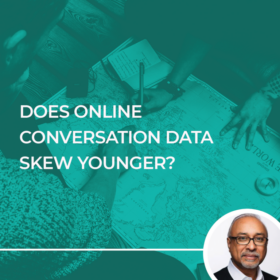In today’s dynamic marketplace, understanding consumers is more crucial than ever. Gone are the days of one-size-fits-all marketing strategies. Instead, businesses are turning to approaches like needs-based segmentation to tailor their marketing and innovation efforts to meet specific consumer preferences. As a leader in market research, 113 Industries recognizes the transformative power of needs-based segmentation in building effective marketing strategies and creating products that resonate with diverse audiences.
Needs-Based Segmentation – The Concept
Needs-based segmentation involves categorizing consumers based on their unique needs, behaviors, and preferences. Departing from conventional demographic segmentation, this approach explores the psychological and emotional drivers behind consumer behavior. By identifying and addressing specific needs, businesses can create targeted and personalized marketing messages that connect with their audience on a deeper level.
Understanding Your Audience
The first step in needs-based segmentation is understanding who your audience is. Market research plays a pivotal role in this process, allowing businesses to gather valuable insights into the demographics, psychographics, and behaviors of their target consumers.
To emphasize the effectiveness of needs-based segmentation over demographic analysis, consider the following example. A company launching a new line of fitness wear intends to target men in their mid-30s with moderate incomes. Demographically speaking, both consumers may appear to be in the same target market. However, when they delve into the behavioral segmentation aspect of needs-based analysis, a striking revelation occurs. Their audience comprises fitness enthusiasts and individuals looking for comfortable and stylish athleisure options. This insight enables the company to tailor its marketing messages to address both the performance-driven and fashion-forward needs of its diverse audience. Demographic data alone fails to capture these distinctions.
The key takeaway here is that needs-based segmentation allows the company to target these individuals based on their actual preferences and behaviors. They can craft marketing strategies that cater to the unique needs of each segment, showcasing technical features and performance benefits for the fitness enthusiast while emphasizing comfort and style for the trend-conscious customer.
This example underscores how needs-based segmentation outperforms demographic segmentation alone by enabling the business to tailor their marketing efforts precisely, leading to higher customer engagement and satisfaction.
Developing Marketing Personas
Building on audience understanding, creating detailed marketing personas is the next step in needs-based segmentation. Marketing personas are fictional characters that represent different segments of the target audience. These personas are based on real data and insights gathered through market research.
For our fitness wear example, the company might develop personas such as “Performance Pro,” representing consumers focused on functionality and technical features, and “Style Seeker,” representing those who prioritize fashion and aesthetics. Each persona guides the development of targeted marketing strategies that align with the unique needs and preferences of the respective segment.
Consumer Behavior Dynamics
Consumer behaviors are the driving force behind successful marketing campaigns. By analyzing behaviors, businesses can identify patterns and trends that inform their strategies. Behavioral segmentation, a crucial aspect of needs-based segmentation, involves categorizing consumers based on their actions, purchasing habits, and engagement with products or services.
Continuing with our fitness wear scenario, the company might discover that the “Performance Pro” persona tends to shop online for convenience and values detailed product specifications, while the “Style Seeker” persona prefers in-store experiences and engages heavily on social media for fashion inspiration. This behavioral insight guides the allocation of marketing resources and helps optimize channels for maximum impact.
Crafting Tailored Marketing Strategies
Armed with a deep understanding of their audience, detailed marketing personas, and insights into consumer behaviors, businesses can now craft tailored marketing strategies. Needs-based segmentation allows for the creation of targeted messaging, personalized promotions, and channel-specific approaches.
Equipped with an in-depth comprehension of their audience, data-backed marketing personas, and an understanding of consumer behaviors, businesses are now able to develop customized marketing strategies. Needs-based segmentation provides the foundation for generating focused messaging, personalized promotions, and tailored strategies.
For the fitness wear company, this might involve showcasing the technical features and performance benefits of their products in online campaigns targeting the “Performance Pro” persona. Simultaneously, in-store promotions and social media collaborations can highlight the fashion-forward aspects of their athleisure line to appeal to the “Style Seeker” segment.
The Competitive Edge
One of the key advantages of needs-based segmentation is its ability to provide a competitive edge. In a crowded marketplace, understanding and meeting the specific needs of diverse consumer segments sets businesses apart from their competitors. It fosters brand loyalty and enhances customer satisfaction, ultimately driving long-term success.
In conclusion, needs-based segmentation is a game-changer in the world of marketing. By delving into the intricacies of consumer needs, businesses can create more meaningful connections, boost customer engagement, and stay ahead in a rapidly evolving market. As 113 Industries continues to pave the way for market research innovations, we encourage businesses to embrace the power of needs-based segmentation for a more targeted and impactful marketing approach.
Please reach out to continue the conversation about needs-based segmentation.





